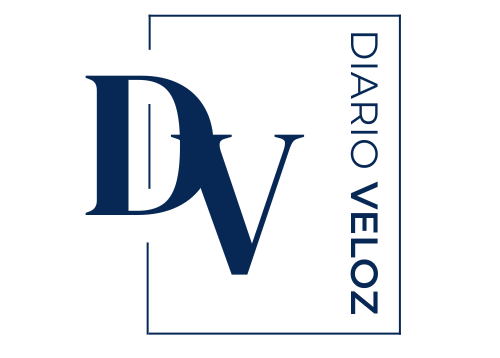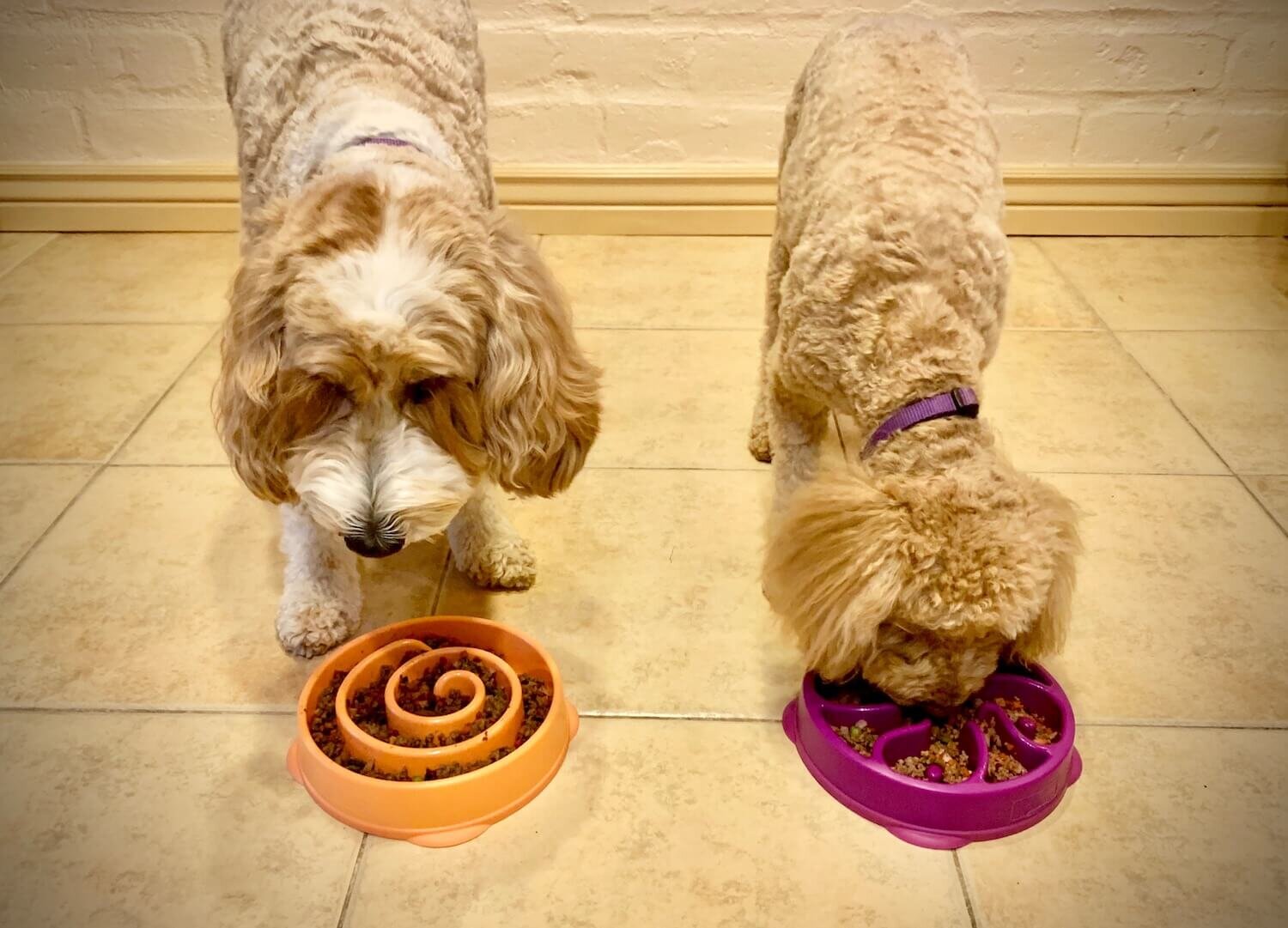There are so many puzzle bowls out on the market. They come in all different shapes, sizes, and materials. What makes the best slow feeder dog bowl?
There are a lot of factors to consider when choosing a maze bowl for your dog. Different breeds will need different things after all.
However, we can help you paint a picture of what the best slow feeder dog bowl looks like in a general sense. These are the features you’ll want to look for no matter what breed of dog you have.
Our Fenrir Puzzle Bowl is a great example of what to look for in a good food bowl for your dog.
Let’s dive into the features of what makes the best slow feeder dog bowl.
The Best Slow Feeder Dog Bowl has Tall Ridges
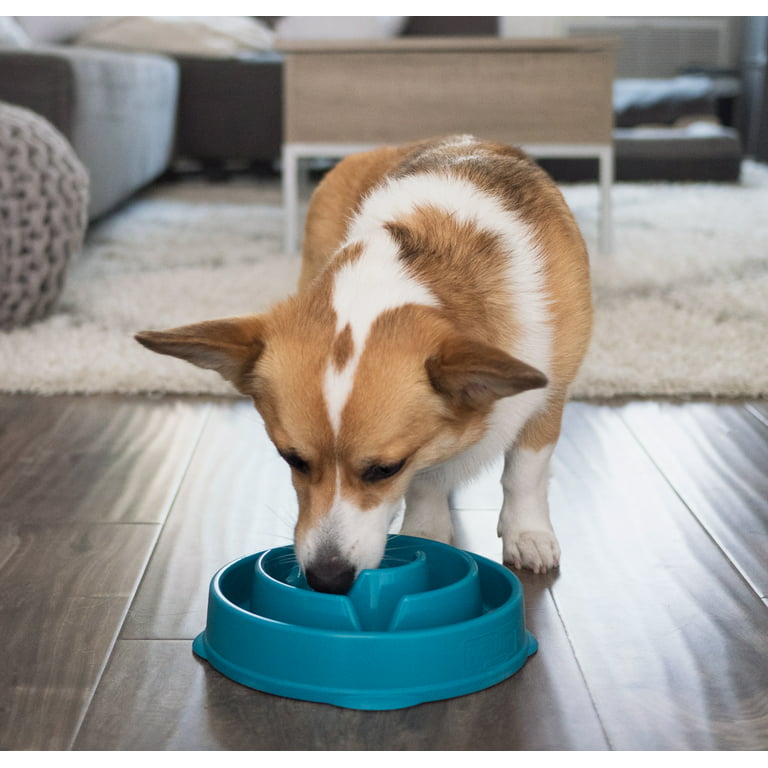
You’ve most likely seen a puzzle bowl before. They’re also called maze bowls, because the raised parts of the bowl make it look like a maze.
If the ridges are not tall enough, the slow feeder won’t be able to properly do its job. This is because your dog will have too easy of a time picking the food out of the dish. They may even be able to get an entire mouthful still depending on the bowl and the breed of dog you have.
A good puzzle bowl will have ridges that are tall enough to provide a challenge and keep your dog from getting too much food at once while also being easy enough for them to use without getting frustrated.
The Best Slow Feeder Dog Bowl has a Non-slip Bottom
It doesn’t matter if the bowl you choose is plastic, ceramic, or stainless steel: you will want a non-slip base.
Without a non-slip base on your dog’s puzzle bowl, it will most likely scoot across the kitchen floor while they’re trying to eat. This is going to lead to one of two problems.
They’re going to scoot the dish across the floor and become frustrated which may cause them to not eat. Or, they will become frustrated and in trying to hold the dish still, they will accidentally flip the dish with their paw.
The bottom of the dish will be outfitted with some sort of rubber that doesn’t slide across a tile floor. It can either be a rubber rim or little rubber feet.
Either solution is fine as they accomplish the same goal.
The Best Slow Feeder Dog Bowl Fits Food Comfortably
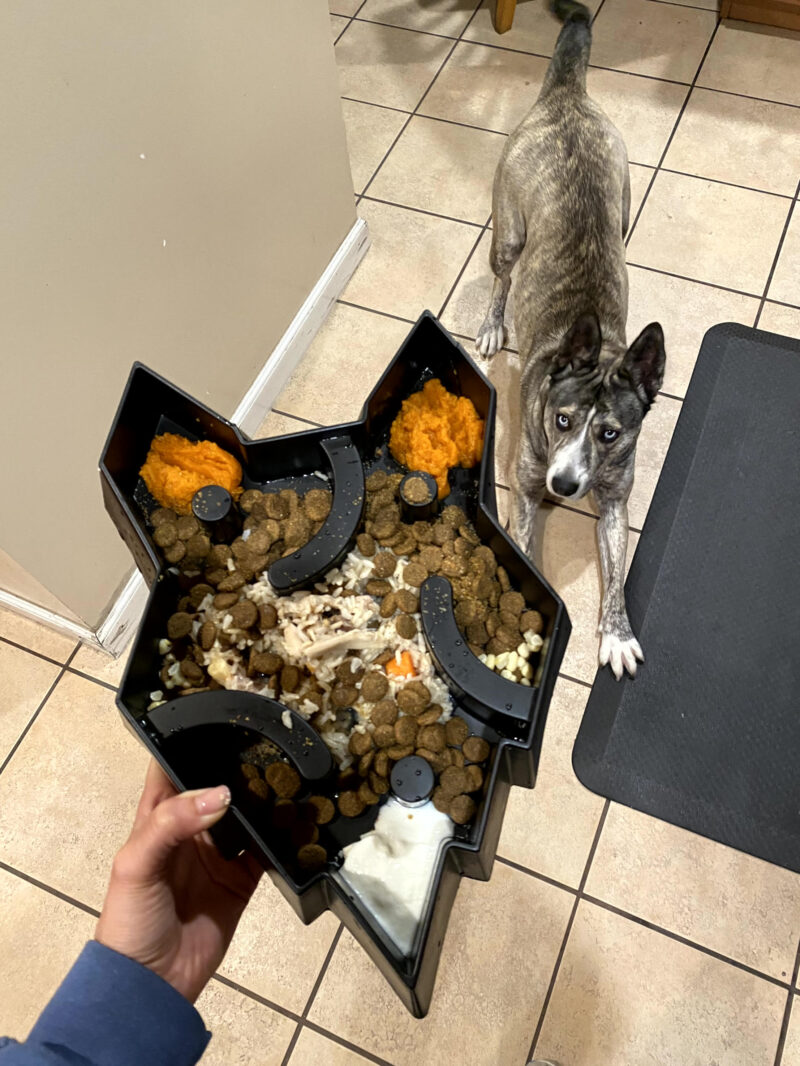
You want your dog’s meal to comfortably fit between the raised ridges on the maze bowl.
If you place their meal in the bowl and it’s heaping, they’ll still be able to take large bites. The bowl won’t slow their feeding in the way it’s designed to.
Ideally, you’ll want all of the kibble in the bowl to fit down into the ridges when it’s filled. You may need to shake the bowl to settle the food properly and that’s okay as long as all of the food fits well once it’s settled.
The Best Slow Feeder Dog Bowl is an Appropriate Size
This criterion is completely dependent on the size and breed of your dog.
If you have a little teacup chihuahua, they won’t need the same sized bowl as a great dane. They may find a bowl that’s too big or too small difficult to eat from.
So, when considering if the bowl is large enough to comfortably fit meals, you also want to consider if it’s the right size to accommodate your dog’s needs.
Not only that, but if the bowl is too large, it can be too easy for your dog to get the food out of. This will not slow their eating.
If the bowl is too small, their food may pile on top of it where they can get a big bite without having to interact with the bowl at all.
An appropriate sized puzzle bowl will accommodate all of the food needed at meal time while also providing an appropriate challenge for your dog while they have their meal.
The Best Slow Feeder Dog Bowl is Easy to Clean
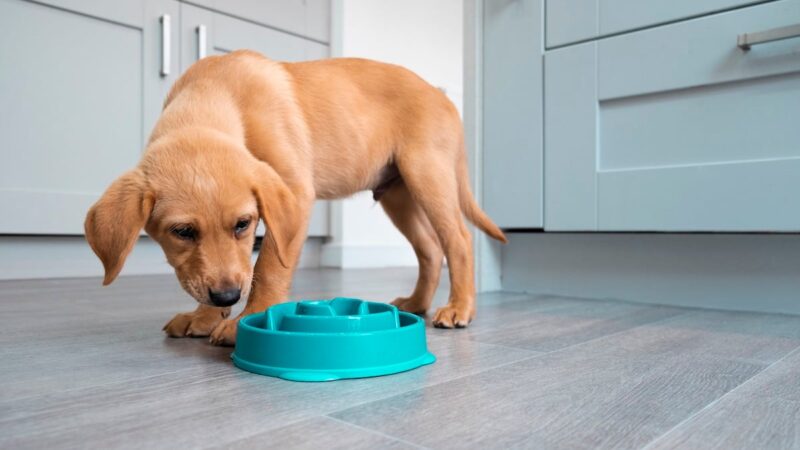
Your dog will ideally be using their puzzle bowl multiple times a day, every day.
This means it will need to be washed and dried regularly.
You’ll want a maze bowl that’s easy to clean and dry. Especially if you occasionally treat your dog to wet food.
A lot of maze bowls can even be put in the dishwasher on the top rack for an extra easy clean up.
The Best Slow Feeder Dog Bowl Works for Your Dog
Every dog is different, so the type of puzzle bowl that works for one dog may not work for another.
Thankfully, there are many different designs for puzzle bowls out on the market.
You’ll find the classic maze design with ridges and valleys, but there are some others as well.
There are puzzle bowls with posts instead of maze-like ridges. They work in the same way by having your dog only be able to reach food a few pieces at a time.
There are some with compartments that your dog needs to paw food out of. Some feature covers that allow you to hide food and your dog needs to find it.
So, if one design doesn’t work for your dog, try again.
There is a puzzle bowl out there for your dog and their needs.
Conclusion
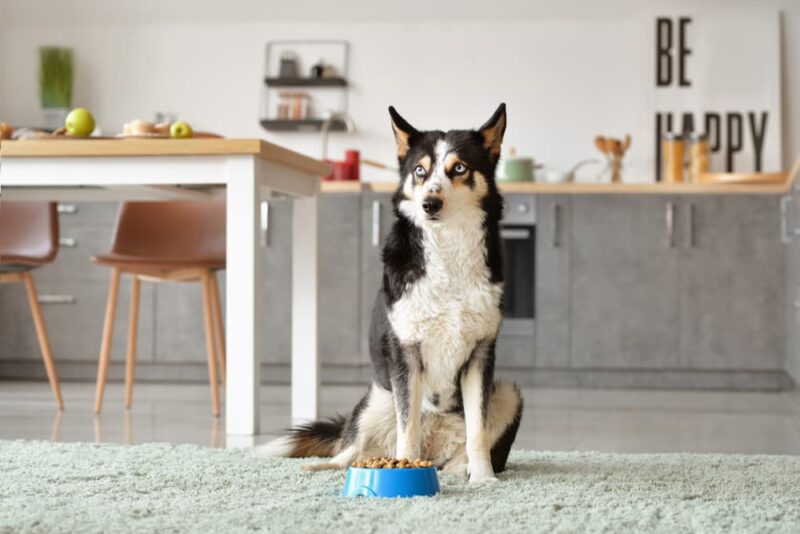
Overall, the best slow feeder dog bowl is going to be the one that your dog uses. It doesn’t do any good to give them a bowl they don’t like to use.
Of course, there are some features that will make a puzzle bowl better than others such as a non-slip bottom and proper indentation.
Have you tried a puzzle bowl for your dog before or have you been looking to try one out?
Do you have a success story you’d like to share about your dog and their favourite puzzle bowl?
Come over to our social media page and share. We can’t wait to hear from you.
FAQs About the Best Slow Feeder Dog Bowl
What is a slow feeder dog bowl, and why should I consider using one for my pet?
A slow feeder dog bowl is designed to slow down a dog’s eating pace by making it more challenging for them to access their food. You should consider using one to promote healthy eating habits, prevent digestive issues, and provide mental stimulation for your dog during mealtime.
Are there any safety concerns associated with using a slow feeder dog bowl?
Slow feeder dog bowls are generally safe to use. However, monitor your dog during the initial use to ensure they don’t become frustrated or anxious. Some dogs may need time to adjust to the new feeding method.
My dog seems frustrated with the slow feeder bowl. What can I do to help them adjust?
Start by using the slow feeder bowl with a small portion of your dog’s meal and gradually increase the amount as they become more comfortable. Be patient and offer positive reinforcement to encourage them.
Can slow feeder dog bowls be used for wet or raw food, or are they primarily for dry kibble?
While slow feeder bowls are primarily designed for dry kibble, some can be used for wet or raw food. Look for bowls with suitable features for wet or raw diets.
Are there any specific training techniques or strategies to introduce my dog to a slow feeder bowl successfully?
Gradually transition your dog to the slow feeder bowl by mixing it with their regular bowl for a few days. Use positive reinforcement, and be patient as your dog gets used to the new feeding method.
